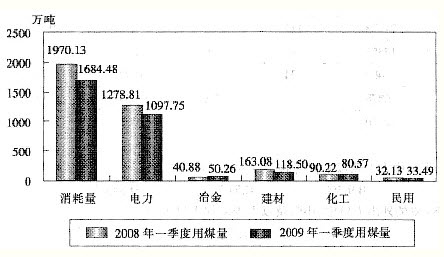问题
单项选择题

2009年第一季度冶金行业用煤量与去年同期相比增长了约()
A.28%
B.30%
C.26%
D.23%
答案
参考答案:D
解析:
由图可知,2009年第一季度冶金行业的用煤量为50.26万吨,2008年同期为40.88万吨,故2009年第一季度冶金行业的同比增长率为(50.26-40.88)÷40.88<10÷40.88<25%,故D为正确答案。

2009年第一季度冶金行业用煤量与去年同期相比增长了约()
A.28%
B.30%
C.26%
D.23%
参考答案:D
解析:
由图可知,2009年第一季度冶金行业的用煤量为50.26万吨,2008年同期为40.88万吨,故2009年第一季度冶金行业的同比增长率为(50.26-40.88)÷40.88<10÷40.88<25%,故D为正确答案。